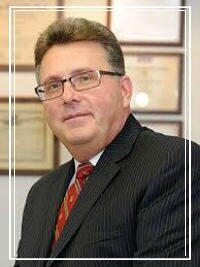
Nursing and healthcare careers are stressful and demanding on many. One RN tells his story about how he developed an opiod addiction. He was caring for patients at work and at home. When kidney stone problems started, so began the habit of taking pain pills. Nurses and healthcare practitioners have unique opportunities to position themselves with access to the pills to which they too often become addicted. Home healthcare settings, with fewer people watching, may provide a chance to skim some medications here and there. Just like stealing candy from a baby, it becomes easier and seemingly safe.
What happens to the medications administered to patients who refuse to take them?
In the case of the opiod addicted RN, his own judgment was became compromised. “My drug use was out of control. I was stealing 10 to 12 pills and 50 to 70 mg of injectable opioids every day. To stay close to my supply, I volunteered for overtime and called in on my day off to see if the unit was short-staffed. I carried a vial of naloxone (Narcan), an opioid-receptor antagonist, in case I overdosed. I don’t know who I thought would administer it. My thinking was distorted by the drugs.[i]”
Signs of drug diversion; moving legitimate drugs to channels of illicit use[ii]:
- “Arriving early, staying late, and coming to work on scheduled days off;
- Excessive wasting of drugs;
- Regularly signing out large quantities of controlled drugs;
- Volunteering often to give medication to other nurses’ patients;
- Taking frequent bathroom breaks;
- Patients reporting unrelieved pain despite adequate prescription of pain medication;
- Discrepancies in the documentation of controlled substance administration;
- Medications being signed out for patients who have been discharged or transferred or who are off the unit for procedures or tests.”
Studies and reports indicate that nurses have a higher recorded rate of a history of alcohol abuse compared to other healthcare professionals.[iii] Additionally, ER nurses are found to 3.5 times more likely to use cocaine or marijuana compared to other specialty nurses[iv]. Unfortunately, guilt and shame sometimes cause individuals suffering with addiction to hide it and develop coping behaviors. There are programs and processes to help nurses struggling with addiction behaviors and contrary to the fear of many, the nurse’s professional license status may be protected. However, if a nurse does nothing and continues abusing controlled narcotics they could walk into the loss of a job, license and career.
The Illinois Nurses Association established a network of peers who offer support for nurses with a variety of professional performance concerns connected with misuse of alcohol, drugs, mental or physical illness, or psychiatric disorders. The group is called the Peer Assistance Network for Nurses (“PANN”), and their toll-free confidential hotline number is 800-262-2500.
Seeking treatment for terrible diseases like alcoholism and drug addiction by skilled professionals can not only increase the risk of recovery, active treatment can also be weighed as a factor when a nurse or healthcare practitioner’s license is on the line.
Michael V. Favia & Associates are available to assist nurses and other healthcare professionals with professional licensing matters and lawsuits. With offices conveniently located in the Chicago Loop, Northwest side and suburban meeting locations, you can schedule a discrete meeting with an attorney at your convenience and discretion. For more about Michael V. Favia & Associates’ professional licensing work, please visit www.IL-Licensing.com and feel free to “Like” the firm on Facebook and “Follow” the firm on Twitter.
[i] Lippincott Nursing Center, Addiction: A Nurse’s Story, By James Hastings, RN, as told by Jeri Burn, MSN, RN, Aug. 2007.
[ii] Addiction: An Occupational Hazard in Nursing, See HNi
[iii] Kenna GA, Wood MD. Family history of alcohol and drug use in healthcare professionals. J Subst Use 2005;10(4):225-38.
[iv] Trinkoff AM, Storr CL. Substance use among nurses: differences between specialties. Am J Public Health 1998;88(4):581-5.
